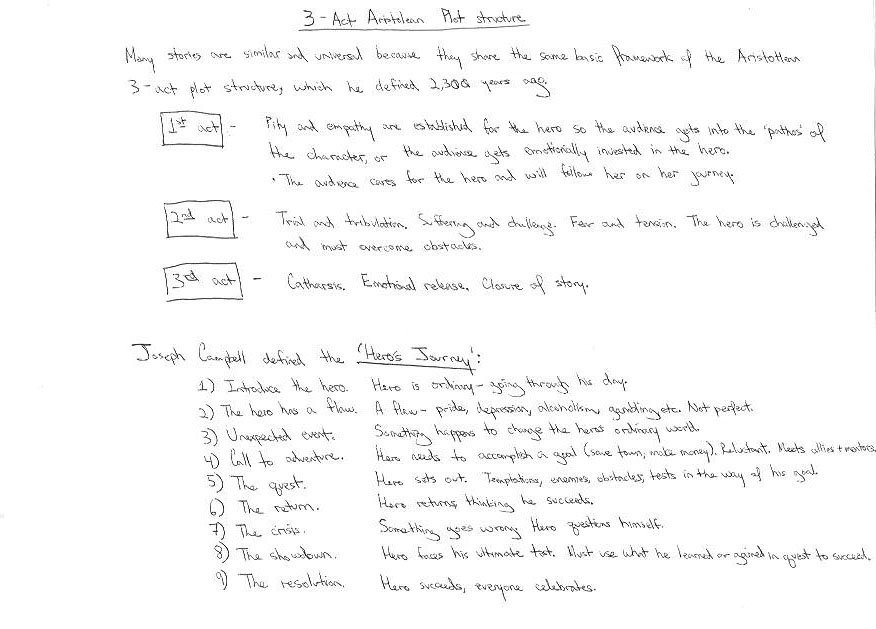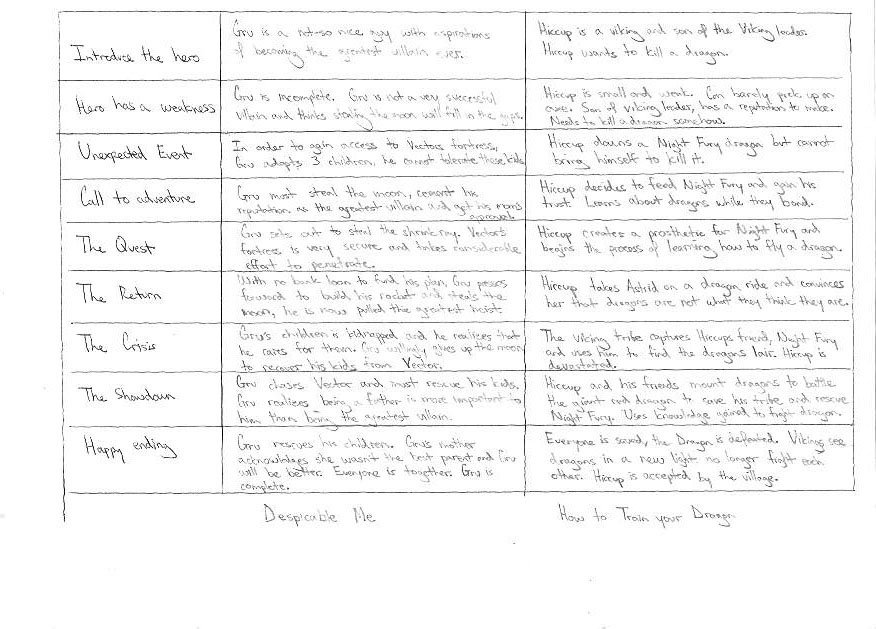If you want to understand story-writing and how story is constructed, read Ideas for the Animated Short (written by Karen Sullivan, Gary Shumer, and Kate Alexander). I recommend this book for anyone looking to understand the form and formula of story writing.
Aristotle defined a 3-act plot structure 2,300 years ago. The first act established pity and empathy for the hero. The second act is trail and tribulation that the hero suffers and overcomes to achieve his objective. The third act is the final catharsis.
Joseph Campbell, a mythology professor, further defined Aristotle’s plot structure by detailing the Hero’s Journey. The Hero’s Journey can be split in to 9 distinct phases:
1. Introduce the hero.
2. The hero has a flaw.
3. Unexpected event.
4. Call to adventure.
5. The quest.
6. The return.
7. The crisis.
8. The showdown.
9. The resolution.
This is why many movies seem similar to one another. It is not that writers are cannibalizing each others scripts, it’s because every movie follows the hero’s journey. The hero’s journey is something that Joseph Campbell deemed a universal story in that these images and characters are shared in all stories across cultures and all time periods, Joseph called it the monomyth or ‘one story.’
I identified each phase of the hero’s journey by watching Despicable Me and How to Train your Dragon. It was fun to identify each moment in the hero’s journey by watching the films (Spoiler Alert: Do not read my notes if you intend on watching these movies). This is why when I heard the complaint that the newest Star Trek movie was a ripoff of Star Wars Ep 4. A New Hope, I shook my head. It was because the person identified the similarity of circumstance of the hero’s journey in both films. Which brings me to point out that good films are not about good story formula, it is about form. But that is for another post. Just felt like posting about the Aristotelian plot structure and the Universal story.



